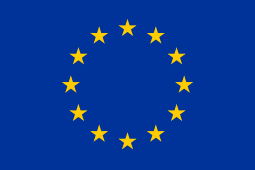The Enduring Appeal of Friends Amongst Irish Teenagers: Comedy and Queer Representation
Izzy Fox, February 15 2024
Preliminary Focus Group Findings
Focus groups were conducted in three Irish secondary schools in Ireland, with Transition Year students (15-16 yr olds) as part of the scoping phase of the GEMINI research project. Students were asked about their TV viewing habits, how they consumed serial drama, including on which platforms, their views on gender issues, such as stereotyping and equality, as well as their perspectives on gender and teen representation in TV series.
There were many interesting findings from these focus group interviews, including that some teenagers employ unconventional methods of consuming media, such as watching serial dramas at 1.5 speed, as well as watching them while performing other tasks, such as cooking, doing homework or scrolling through TikTok. Furthermore, there was huge variation in what series they watched, with few dominant trends to speak of, possibly due to the extensive availability of streaming platforms and viewing devices in every household.
However, one of the most surprising preliminary findings from the focus groups is that certain older TV series still resonate with Irish teenagers, particularly the US sitcom Friends (NBC, 1994-2004). Friends follows the lives of six (three male and three female) 20-30 somethings, all white, straight, cis and able-bodied, living in New York City. The main characters of the show are Monica, her brother Ross, his college best friend Chandler, Monica’s high school best friend and roommate Rachel, Chandler’s roommate Joey, as well as Monica’s ex-roommate Phoebe. The first few seasons of the show centre on the will-they-won’t-they? sexual dynamics between Ross and Rachel, while Chandler and Monica are the core romantic partnership in later seasons and come to embody an aspirational normative heterosexual relationship, based on attraction, respect and monogamy.
Across all three focus groups, Friends was either one of, if not the, most popular serial drama. In Ireland, Friends is shown daily on television, and has been since it was first broadcast, as well as being accessible via Netflix, which may explain why it was also one of the shows that teens were most likely to watch with family members. The series particularly resonated with the girls we interviewed, who acknowledged the significance of the gender balance amongst the main cast members. Some students also mentioned how Rachel’s hairstyle and clothes were hugely influential on women’s and girls’ fashion trends. Young people across all groups related to the humour, characterisation and plotlines of the show, even though they acknowledged that attitudes towards certain social issues were outdated. For instance, the teenagers noted that the gender representation in the show was stereotypical, at times, with Monica, for instance, embodying the domesticated, “mother hen”-trope, in spite of her career as a chef, and the male leads often trying to assert their masculinity. In addition, Irish teenagers also identified that some of the more problematic aspects of Friends related to the show’s representation of queer characters. What follows is a brief discussion of the queer representation in Friends, honing in on particular characters, scenes and storylines.
Queer Representation in Friends
There are multiple problematic storylines and sequences that reinforce heteronormativity in the series Friends. While the presence of a lesbian couple, namely Ross’s ex-wife Carol and her partner Susan, throughout all ten seasons is a nod to inclusion, they are often the butt of the joke and are seen as a disruptive force to the heteronormative equilibrium of the show, particularly to Ross’s fragile masculinity. In fact, all three male leads are involved in storylines, presented to the audience as humorous, that show them resisting urges that could be construed as feminine, thus exposing the show’s underlining homophobia.
For instance, Joey becomes uneasy and challenges the interior design changes that his new roommate Janine makes to the apartment after Chandler moves out, especially when he finds himself appreciating the style, ultimately calling the new items “too girly” and demanding that she remove them (although, he ends up taking some of them into his bedroom). Equally, Chandler being mistaken as gay is an ongoing riff in the series and often considered a barrier to his ability to find a girlfriend in earlier seasons.
Moreover, Ross is extremely uncomfortable with the idea of hiring a male nanny to mind Emma, the baby he had with Rachel, and wants him fired. While this leads to Ross admitting to the nanny, Sandy, later in the episode that his binary views on gender roles emanate from his childhood when his dad criticised him for playing alone with dinosaurs, Ross still engages in flagrant sexism and homophobia that is never fully addressed. For instance, Ross asks Rachel “what kind of a job is that for a man?” and asks Sandy, “are you gay?”. Sandy assures Ross that he is straight and has a fiancée; the implication being that a male nanny is one thing but that a gay nanny is beyond the pale. Later in the episode Ross retorts, “you’ve got to be at least bi”. Arguably, the most problematic queer representation in the entire series is reserved for the character of Chandler’s dad. His dad is a trans woman, played by Kathleen Turner, a cis woman, who is mocked, misgendered and dead-named (as she is only ever referred to as “Charles” or by her drag persona, “Helena Handbasket”). Chandler eventually comes around to accepting his dad’s identity, telling her she “looks beautiful too, Dad” on the day of his wedding to Monica. However, the fact that this line is followed by uproarious laughter from the studio audience highlights that transness is coded as ridiculous and freakish within the Friends universe.
In addition, Chandler’s reluctant acceptance of his father hardly compensates for the jarring transphobic comment made earlier in the wedding episode by his mother Nora to her ex-spouse, “don’t you have a little too much penis to wear a dress like that?”. Consequently, Friends is a show that trades on witty one-liners and clever observational comedy but is compromised, at times, by its lazy gender stereotypes and flagrant queerphobia. This criticism has now been accepted by the showrunner, Marta Kauffman, and by Kathleen Turner, herself, who are both self-critical of the narrowness of the representation in the show. Despite these issues, Friends remains a hugely popular series.
Concluding Thoughts
Interestingly, while Irish teenagers recognise the importance of diverse gender representation in television serial drama, the show that resonates with them the most, namely Friends, is one that has been heavily criticised in recent years for perpetuating problematic gender tropes. However, the young people, for the most part, are able to cast a critical eye on these limited, sexist and queerphobic representations and enjoy Friends for its humour, characterisation, engaging storylines and enduring cross-generational appeal. In fact, the role played by Friends in youth cultures today also surfaces in other GEMINI focus groups, such as the Danish focus groups, underlining the show’s continued international appeal too.


